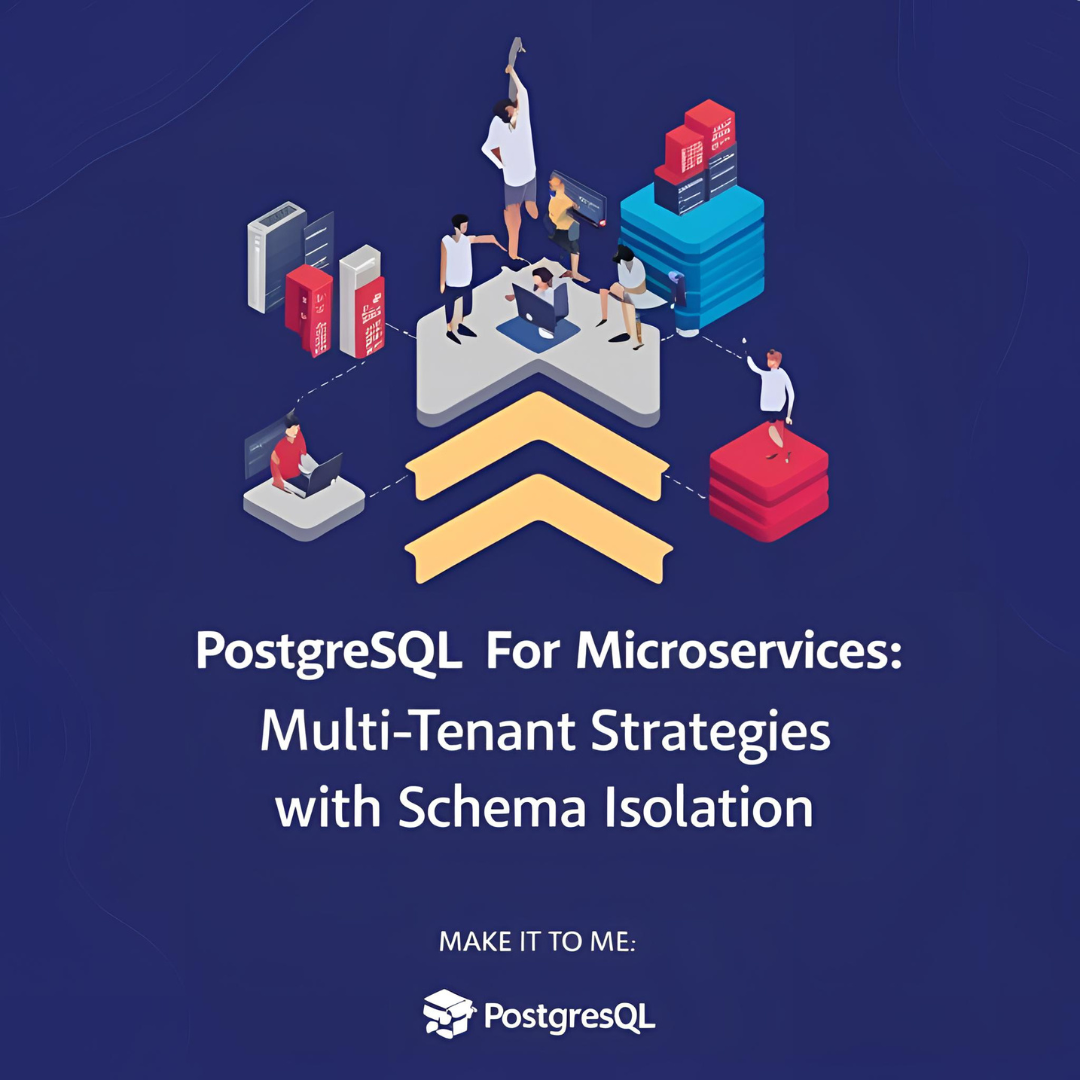In today’s cloud-native landscape, microservices architectures have become the standard for building scalable, maintainable applications. When implementing multi-tenant systems within this paradigm, PostgreSQL offers powerful capabilities through schema isolation that deserve special attention.
Schema isolation provides a balanced approach between complete database separation and shared-table architectures, giving each tenant their own namespace while maintaining database-level operational efficiency. Let’s explore how to effectively implement this strategy in microservices environments.
Understanding Schema Isolation in PostgreSQL
Schema isolation in PostgreSQL allows you to create separate namespaces within a single database. Each tenant gets their own schema with dedicated tables, functions, and database objects. This approach offers several advantages:
- Logical separation – Each tenant’s data remains isolated without needing separate database instances
- Simplified backup and maintenance – Operations can target a single database while preserving tenant boundaries
- Performance benefits – Connection pooling remains efficient with a single database
- Security improvements – Row-level security can be combined with schema isolation for defense-in-depth
Implementation Strategy
1. Schema Creation and Management
When onboarding a new tenant, dynamically create a dedicated schema:
-- Create a new schema for the tenant
CREATE SCHEMA tenant_abc;
-- Set search path to isolate queries to this tenant
SET search_path TO tenant_abc, public;
2. Connection Management in Microservices
Each microservice needs to establish the correct context when connecting to the database. This typically involves:
- Middleware that identifies the tenant from the request
- Connection pool management that sets the appropriate schema
- Schema validation to prevent unauthorized cross-schema access
3. Migration Strategies
Schema migrations become more complex with multiple tenant schemas. Consider these approaches:
- Tenant-aware migration tools (Flyway, Liquibase with tenant context)
- Background jobs that progressively apply schema changes across tenants
- Template schemas for new tenant onboarding
4. Performance Considerations
While schema isolation provides logical separation, all tenants still share the same database resources. Implement:
- Resource governance using PostgreSQL resource queues
- Monitoring at the schema level to identify problematic tenants
- Connection pooling optimized for multi-tenant workloads
Security Implementation
Schema isolation alone isn’t sufficient for complete tenant security. Add these additional layers:
-- Create a role for each tenant
CREATE ROLE tenant_abc_role;
-- Grant specific privileges
GRANT USAGE ON SCHEMA tenant_abc TO tenant_abc_role;
GRANT ALL PRIVILEGES ON ALL TABLES IN SCHEMA tenant_abc TO tenant_abc_role;
-- Implement row-level security as additional protection
ALTER TABLE tenant_abc.users ENABLE ROW LEVEL SECURITY;
CREATE POLICY tenant_isolation ON tenant_abc.users USING (tenant_id = current_tenant_id());
Operational Challenges and Solutions
Tenant-Specific Backups
While sharing a database, individual tenant recovery remains important:
pg_dump -n tenant_abc > tenant_abc_backup.sql
Tenant Migration and Scaling
As tenants grow, you may need to move them to dedicated infrastructure:
- Create a schema-only snapshot of the tenant
- Use PostgreSQL’s logical replication to migrate data with minimal downtime
- Redirect the tenant’s traffic once migration is complete
Conclusion
Schema isolation in PostgreSQL provides an elegant middle ground for multi-tenant microservices architectures. It balances isolation and resource efficiency while maintaining operational simplicity. Combined with proper security practices and operational procedures, this approach scales effectively for most SaaS and enterprise applications.
By thoughtfully implementing schema isolation strategies, you can build multi-tenant microservices that maintain clear boundaries while leveraging PostgreSQL’s rich feature set.


Leave a Reply